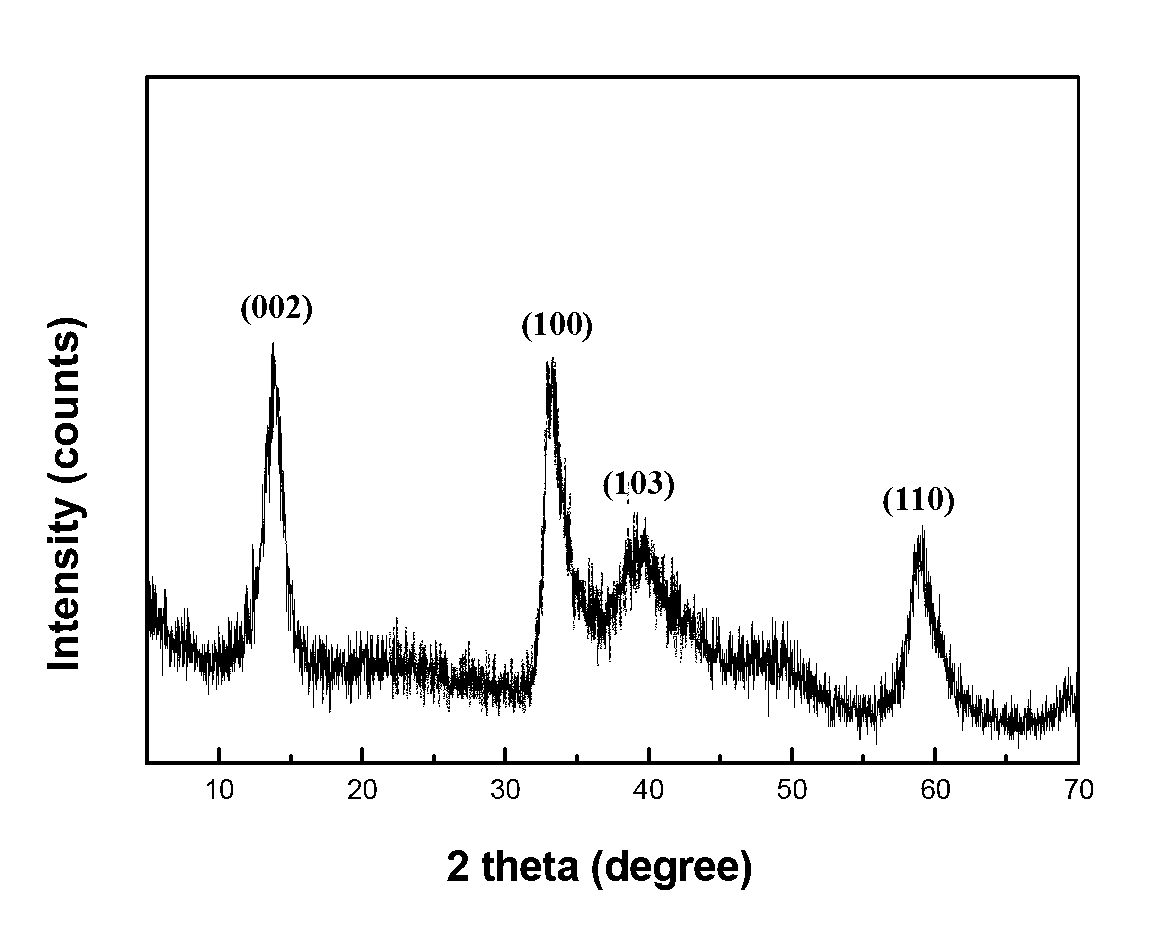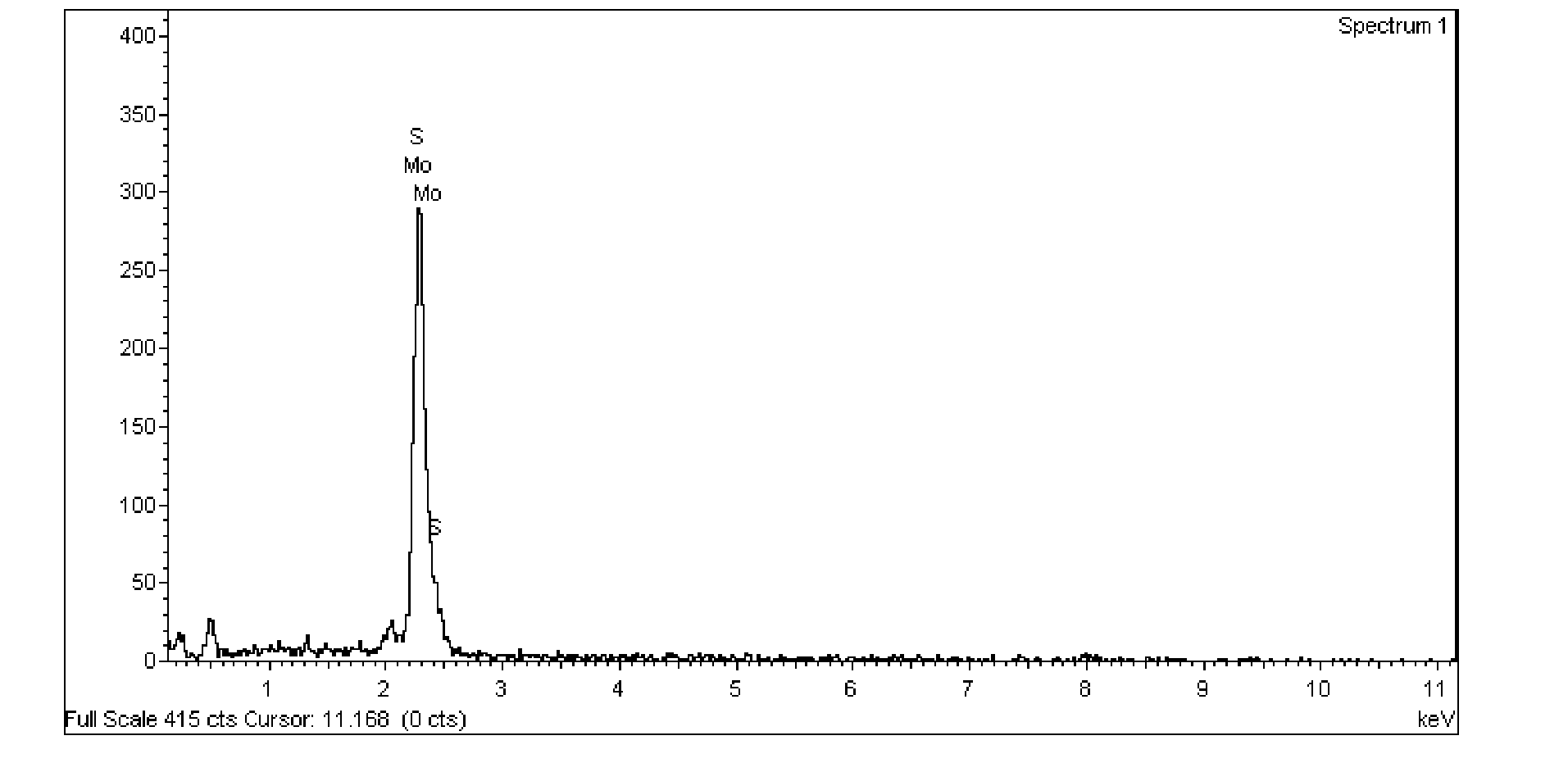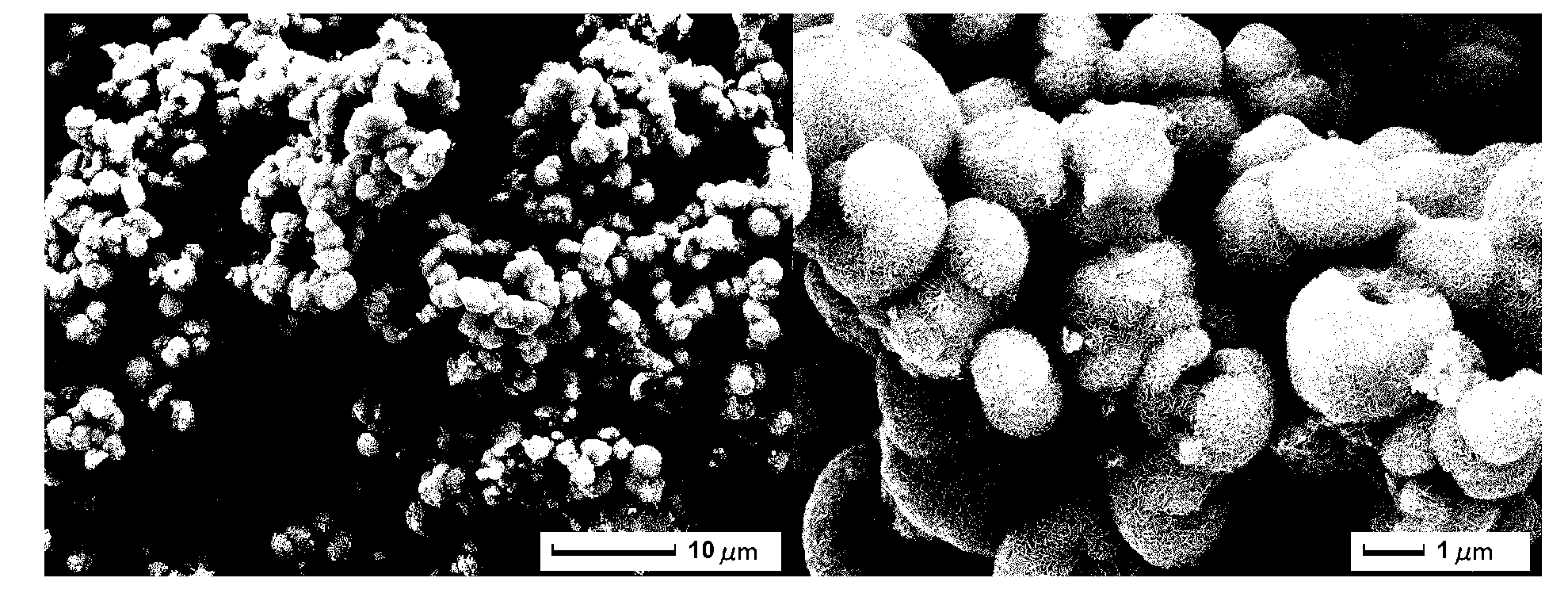Preparation method of flower-shaped hollow molybdenum disulfide microspheres
A technology of hollow microspheres and molybdenum disulfide, which is applied in the direction of molybdenum sulfide and nanotechnology, can solve the problems that the shape of molybdenum disulfide hollow microspheres is difficult to control, the nanoparticles are easy to agglomerate, and affect the large-scale application. The effect of simple and easy to control, obvious layered structure, high specific surface area and tribological properties
- Summary
- Abstract
- Description
- Claims
- Application Information
AI Technical Summary
Problems solved by technology
Method used
Image
Examples
Embodiment 1
[0041] 0.2g C 13 H 22 ClN was dissolved in 70ml of distilled water, and then 1.40g CS(NH 2 ) 2 , 0.725gNH 2 OH·HCl and 0.88g(NH 4 ) 2 MoO 4 . After dissolving completely, use 2mol·L -1 The HCl adjusts the pH to around 6. After stirring for 30 minutes, the mixture was transferred to a 100ml stainless steel reactor, placed in a vacuum drying oven at 180°C for 24 hours, and cooled to room temperature. After centrifugal separation, the reaction product was washed repeatedly with deionized water and absolute ethanol, and finally dried at 80° C. under vacuum for 10 hours to obtain gray-black product powder, namely, flower-like hollow molybdenum disulfide microspheres.
[0042] figure 1 XRD spectra of flower-like hollow molybdenum disulfide microspheres, all diffraction peaks are identical to those of pure MoS 2 The crystal standard diffraction pattern of the hexagonal phase (PDF No. 37-1492) is consistent. Therefore, the synthesis of hydrothermal reaction should be nano-scale MoS 2 . ...
Embodiment 2
[0044] Dissolve 13.6g F127 in 70ml distilled water, then add 1.40g CS(NH 2 ) 2 , 0.725gNH 2 OH·HCl and 0.88g(NH 4 ) 2 MoO 4 . After dissolving completely, use 2mol·L -1 The HCl adjusts the pH to around 6. After stirring for 30 minutes, the mixture was transferred to a 100ml stainless steel reactor, placed in a vacuum drying oven at 180°C for 24 hours, and cooled to room temperature. After centrifugal separation, the reaction product was washed repeatedly with deionized water and absolute ethanol, and finally dried at 80° C. under vacuum for 10 hours to obtain gray-black product powder, namely, flower-like hollow molybdenum disulfide microspheres.
Embodiment 3
[0046] 0.383g(C 8 H 17 ) 2 (CH 3 ) 2 NCl was dissolved in 60ml of distilled water, and then 2.28gCS(NH 2 ) 2 , 1.45g NH 2 OH·HCl and 1.01g(NH 4 ) 2 MoO 4 . After dissolving completely, use 2mol·L -1 The HCl adjusts the pH to around 5. After stirring for 20 minutes, the mixture was transferred to a 100ml stainless steel reactor, placed in a vacuum drying oven at 140°C for 30 hours, and cooled to room temperature. After the reaction product is separated by filtration, it is washed repeatedly with deionized water and absolute ethanol, and air-dried to obtain gray-black product powder, namely, flower-like hollow molybdenum disulfide microspheres.
PUM
 Login to View More
Login to View More Abstract
Description
Claims
Application Information
 Login to View More
Login to View More - R&D
- Intellectual Property
- Life Sciences
- Materials
- Tech Scout
- Unparalleled Data Quality
- Higher Quality Content
- 60% Fewer Hallucinations
Browse by: Latest US Patents, China's latest patents, Technical Efficacy Thesaurus, Application Domain, Technology Topic, Popular Technical Reports.
© 2025 PatSnap. All rights reserved.Legal|Privacy policy|Modern Slavery Act Transparency Statement|Sitemap|About US| Contact US: help@patsnap.com



